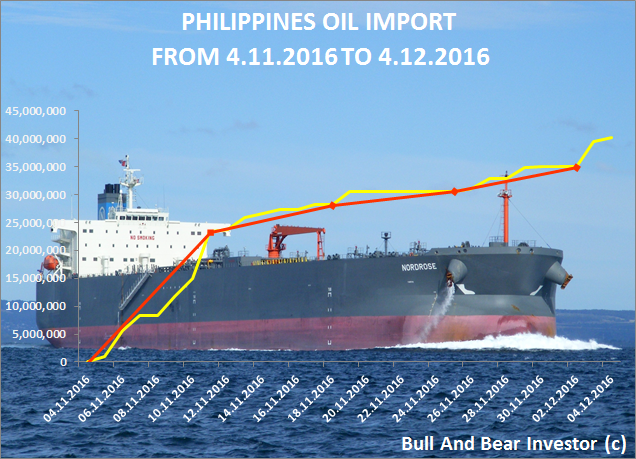About: Energy Select (XLE)
Summary
Tanker data is showing a twisted picture.
Philippine lawmakers have work to do.
Plans to build a new seaport in South China Sea.
The Philippines is a state which consists of islands that are situated on the way of a $5 trillion-a-year trade route, a location of strategic importance. Its economy is swiftly advancing at a significant growing pace of about 7% a year and is in the process of evolving into another Asian epicenter of affluence. The domestic oil and gas production is lagging behind the growing energy appetite, and the reliance on energy imports is high. Saudi Arabia and Russia used to supply a third of the crude oil needed, according to data on the website of the US Energy Information Administration. However, when it comes to our tanker tracking data, some contradictions appear.

(Source: Tanker tracking data, Bull And Bear Investor's calculations)
As we can see on the diagram, the major part of supplies is attributed to the imports from Taiwan. In the period from November 4 to December 4, we tracked five supertankers that carried around two million barrels of crude each from Taiwan to the Philippines. We cannot be certain about where this oil came from, but it was surely not of Taiwan origins. An explanation based on stories of pirates in the South Asian waters may sound too romantic, although our model is based on automatic identification system tracking data, which in theory can be easily manipulated by a captain of the vessel or an operator in charge due to security concerns.
The import curve apparently looks very uneven. That might be explained by a thesis that every time a supertanker is unloaded in the Philippines, it represents a considerable bulk.


No comments:
Post a Comment